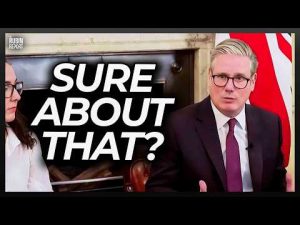In a move that feels long overdue, the Environmental Protection Agency (EPA) has decided to close the doors on its virtually unknown museum, which has done little more than collect cobwebs in a city obsessed with its landmarks. This museum, designed to be a temple of environmental enlightenment, was quite an expensive venture. At a whopping $4 million in taxpayer funds, it was the kind of spender that would have most people scratching their heads. Yet, despite its prime capital location, the museum attracted fewer visitors than a nondescript diner in rural Kansas. At last count, fewer than 2,000 curious minds passed through its doors—a steep price for such a meager turnout.
What exactly was this museum displaying, one might wonder? In less than 1600 square feet, it offered a cursory glance at the EPA’s own fairy tale of environmental justice and climate change, with nary a mention of the more controversial eras in its history. Seemingly glossing over the Trump administration’s environment policies, the exhibit instead turned its gaze to the crusade against carbon dioxide, painting it as an unequivocal villain. The museum’s timeline skipped past any moments that didn’t fit the narrative, like conveniently avoiding vegetables on a dinner plate.
Even Jesse, the show host spilling these beans, was perplexed at how taxpayers bankrolled such a venture with zero ticket sales to recoup costs. Yup, you read that right—entry was free, but that hardly explains why it was emptier than a blockbuster on a Wednesday morning. It’s as if the museum was a high school science project on steroids, souped-up with poster boards that cost a cool $4 million. Apparently, there were no cutting-edge gizmos or interactive wonders, just walls of rhetoric that managed to drive more people away than in.
This is part and parcel of a larger effort to tighten the EPA’s belt. Scaling back their real estate footprint, the agency plans to vacate several floors within the Ronald Reagan Building, saving another $18 million for the allegedly spendthrift taxpayer. By doing so, the EPA hopes to demonstrate fiscal accountability—or at least scrape together enough spare change to cover whatever they’ve been spending it on. Meanwhile, with other initiatives being scrapped or streamlined, they’ve also annulled contracts worth billions, possibly hinting at a larger agenda of ceasing runaway spending.
So what does all of this mean? Well, it seems the EPA is finally feeling the taxpayer pinch in a government that has been, to borrow a phrase, “spending money faster than a teenager at a mall.” This museum, a monument to misguided priorities, is now a reminder that even in Washington, the paint can only stay fresh for so long before reality—and costs—set in. One thing’s for sure: no one will miss an empty room that charged them hundreds per disappointed visitor, even if they didn’t pay an entrance fee. Maybe the EPA should consider a virtual tour of fiscal responsibility next time—at least then, it could save on poster board.







